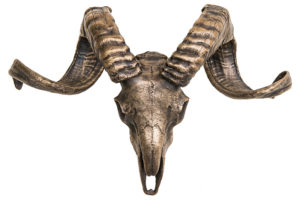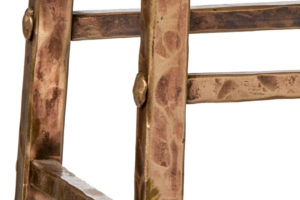Metalwork techniques used to create furniture and home accessories
Forging to create unique metal art and furniture
Forging is the craft of using temperature (either hot or cold) and tools such as a hammer and anvil, to shape and mold metal (iron, steel, bronze). Blacksmiths forge to create items such as gates, handrails, and furniture. Metal is molded to craft home accessories such as lighting, andirons, and fireplace tools. A blacksmith employs the combination of heat and tools to bend metal to create delicate and precise design elements. Once the metal is hot enough, the artist creates texture and patterns on the surface with a hammer or twisting. Blacksmiths create forged joinery to hold separate pieces together. Hand-crafted joinery techniques result in joints that add strength, creativity and beauty to each creation, in addition to ensuring a one-of-a-kind piece.
Below are examples of forged details:


Welding is used to join separate pieces of metal
Welding, in contrast to forging, is pretty simple. To weld, one heats metal with electricity or gas and fuses separate pieces together. It is a faster process than forging because it is melding metal as opposed to bending and shaping metal. However, welded pieces are typically not as strong or durable as a piece that is made with joinery. Doud Studios’ line of smooth bronze tables are made out of a bronze plate over a wood core. This makes up the table-top. The edges are then welded and sanded down to create a smooth finish, in concert with the rest of the material. The legs are hand-forged and you can see the distinct texture and color in the welded and forged pieces pictured below.
A welded piece of bronze over hand-forged legs:

Casting
A cast is a piece that has been created by pouring hot metal into a mold. Casting is used to create sculptures and/or many items. One mold can be used to create hundreds of replicas. At Doud Studios, our line of animal sculptures is made from an animal skull that has been turned into a mold. The mold is then cast in bronze. Each sculpture is hand-finished to create a unique table accessory or wall mount.
A cast sculpture:

Blacksmithing techniques are used to make one of a kind furniture
There are several factors that result in a one-of-a-kind piece, starting with design and material choice. After these selections are determined, a custom piece is hand-worked as opposed to machine made or cast. A blacksmith uses heat and tools to bend metal to create shapes, and joinery is crafted to join separate pieces together (as opposed to welding where the separate pieces are melted together). An example of forged joinery is a riveted tenon as seen in the cross section on the stools legs.

How can you determine if a piece is hand-made or machine made?
You can easily determine if a piece is hand-crafted by analyzing the joinery, where the edges of a piece meet, and the legs. Variations in the surface and edges point to individual craftsmanship. Joinery, as opposed to welding, is another indication of a hand-crafted piece. Visible welds can indicate machine-made, as does a ‘perfect’ look.
When to choose a hand-forged piece of furniture
As we determine the most important purchasing factors when contemplating a new item for the home, a hand-forged item is the right choice if artistry, craftsmanship and uniqueness are the most important values and criteria to you. Forging allows for a one-of-a-kind piece that no one else in the world will have. Each element is made just once, so is one of one, as opposed to one of a thousand.
